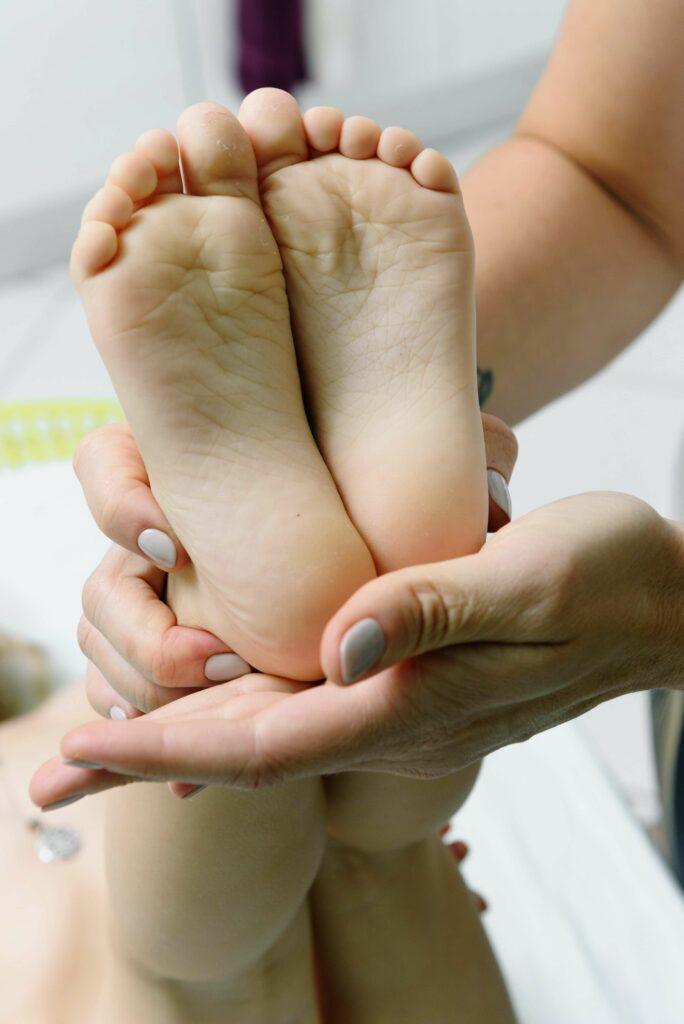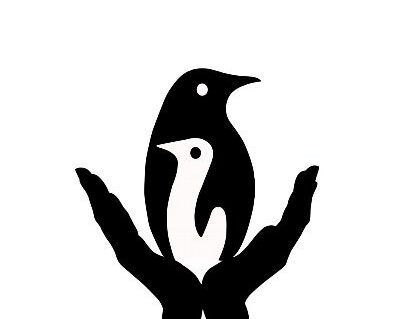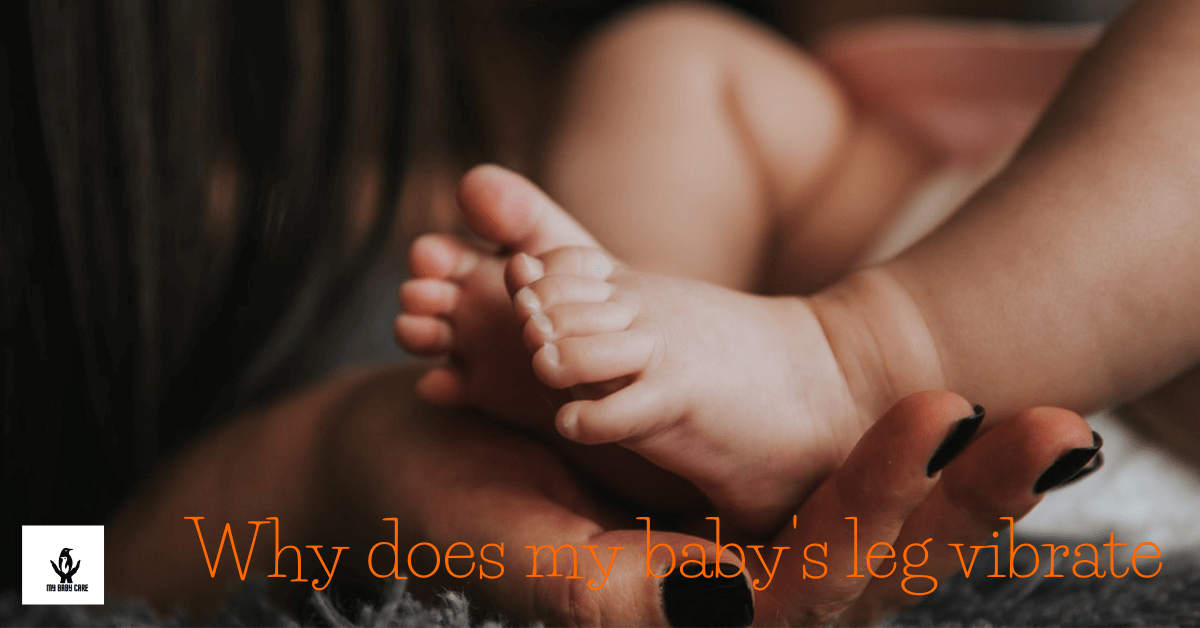The odd shaky movements of your kids are varied. It extends from quivering chins to trembling hands and legs. These are various extra movement types that can present in early childhood.
Those are completely harmless. Your baby will outgrow them with time. This is the simple and common answer for the question ” why does my baby’s leg vibrate?
It is important to understand the presence of seizures with your younger kids. so these seizure movements patterns differ from the normal movement patterns.
Dear parents, I need to add a brief explanation about the issue. First of all, it is nothing to worry about and quite a normal phenomenon. Mostly these types of jerks or shakes happen while your child is sleeping. Babies Have immature nervous systems and most of the baby’s movements are uncoordinated.
When these jerky movements of the limbs happen within your kids, they are unaware of the movements. The Baby’s sleep is disturbed involuntarily. Most of the time they are awake with a shudder. If this happens at a time, you can console your baby immediately and put them back to sleep. Sometimes you can swaddle them.
This swaddling is a good technique for your younger kids to sleep without any disturbances. There are plenty of other reasons for a baby’s leg shaking. So the most common natural reason is the immature nervous system.
Sometimes a bit of caffeine in mom’s breast milk can cause this. Also, overactive reflexes can result in the chin and lower lip quivers and jittery lower limbs and upper limbs a few times a day. Those inhibitory signals mature with time and then this bitterness and tremors disappear.
Table of Contents
1. Newborn reflexes and behavior related leg Vibration
Sometimes parents can see various leg vibrations and other spontaneous movement types due to your newborn baby’s reflexes. These movements are all harmless behaviors and we can identify them in various categories.
| Normal immature reflexes are there due to immature nervous system |
| Normal protective reflexes |
| Normal sleep movements |
| Normal irregular breathing patterns |
| Normal irregular breathing patterns |
| Normal feeding reflexes |
| Normal jitters when crying |
| Normal gastrointestinal movements |
| Normal breathing sounds and various noises. |
Sometimes you may be confused about identifying these various movement types. So it is better to have a close observation of the child’s day-to-day behaviors.
The few suspected situations
Dear parents, if your baby is performing poorly and has poor color in complexion, it may be an alert situation for you. On these occasions, babies show few vibrations in their limbs. In addition, if your baby has a fever more than 12 weeks old, you need to consult your doctor and get action for that condition associated with fever.
If your child shows jerky movements and sudden vibrations with trouble breathing and sometimes suspected seizure episodes can present with your child. Also, be concerned about the severe ill look of your kid.
If you see a leg or upper limb vibration or jitters with the above-mentioned suspected signs and symptoms, these are more concerning situations for your baby. It is highly recommended to get further medical attention.
Normal immature nervous system reflexes similar to leg vibrations
Shaking and vibration movements of the upper limb can be seen with the startle reflex. Here the baby tries to stiffen their body and try to straighten their arms and forearms while opening their hands.
Sometimes babies show a little degree of leg vibrations along with the startle reflex responses of the hand. Be causes to identify the real variation from the variety of movement types.
Also, babies are trying to turn their heads sides and their arms and legs are put into straighten position altogether, This posture is a result of the tonic neck reflex of the baby.
In addition to that chin trembling, lower lip quivering, jitters, or trembling can occur as spontaneous vibrative movements of your newborn’s body. Finally, you may be able to see leg vibrations as a result of these reflex activities.
Normal jitters when crying
Jitters and trembling of arms and legs are very normal in newborns. You may notice these jitters as leg vibrations on a few occasions in day-to-day life. When the baby is crying these are more obvious and will be outgrown at the age of 1-2 months.
But focus on your kid until they stop crying. If the jittery movements are still present even after the crying, it is not normal.
If you need to clarify this, you can give me something to suck. Because normal trembling and vibrations will stop with the sucking. There you can identify the normal from abnormal.
If the jittery pattern is increasing and you can see the high frequency of jittery movements, it may be a sign of seizures. These are very rare. Also associated with muscle jerking and eye blinking as well. Normally babies are not crying during the seizures.
Newborns do various sleep movements
Sudden jerks, twitches of both arms and legs can only occur during sleep. All they are most likely normal. These movements can recur and can last for a few seconds. It starts soon after falling asleep.
They last a few seconds. THESE ARE COMMON IN ALL AGES. Not special for newborns. If you suspect a few seizure episodes during the sleep of your baby, those episodes can last more than 10 seconds. Dear parents, consider this timing as a landmark to suspect a certain movement whether it is bad or normal.
2. Trembling and quivering may cause leg vibration
Trembling and quivering may cause leg vibration and they mainly start from the chin or lip quivering and are later markedly seen with the lower limb and upper limb vibration. After the nervous system matures this bitterness and tremors disappear automatically.
If the high levels of hormones can present with the babies sometimes. Norepinephrine is a kind of hormone-like this. They have a stimulating effect. It can manifest in tremors associated with leg vibrations in kids. When the hormone levels decrease, the tremors, jitters, and these vibrations of the body will slow down.
If the jitters and vibrative movements in limbs may occur due to the neurological changes. That is slightly more worrisome than normal tremors. There are degrees of muscle twitch that can occur during muscle relaxation with various body movements. This is called myoclonus. This can reduce the rate of an individual’s ability to talk, walk and eat. So It is a highly medical attentive thing among babies.
If you see sudden jerky movements- you can try to stop that jerk leg or upper limb tremor by provoking another different movement like a loud clap. Also, you can quickly move your kid from one position to another position. Don’t think about the discomfort. These harmless movements will usually stop on their own.

More about leg shaking
The immature neurological system of babies sends impulses to muscles more than necessary. These excessive nerve impulses can cause leg tremors and chin and lip quivers in newborn babies. When things become more organized these movements disappear.
Sometimes vibrations can happen due to benign nonepileptic events beginning in infancy. Those are called shuddering attacks. These consist of rapid shivering of the head, shoulder, and trunk. But can be extended to the leg vibrations as well. We can consider those as very normal movement patterns in kids.
How can you suspect a neurological problem
You can see the following signs and symptoms within your kid. It may be an external presentation of a neurological problem.
Those are
| Abnormal movement patterns |
| Difficulty to feed |
| variations of body temperature |
| Alteration of consciousness |
| Rapid changes in head size |
| Change in muscle tone |
| Fussiness. |
| Random or roving eye movements, eyelid blinking or fluttering, eyes rolling up, eye-opening, staring at one side – seizure suspects |
| sucking, chewing, and smacking – seizure |
| Protruding the tongue |
| Pedaling movements of legs |
Lungs pause in breathing |
| Thrashing |
3. Final thoughts
At first glance, babies vibrate their legs due to nerve-wracking. So they cry or twitch during their sleep. These movements are very common. Babies figure out their bodies and environment. But if you suspect seizures related to shaky movements, it is high time to get medical assistance.
You can video record these few suspected shaky movements and can discuss them with your pediatrician. Let your doctor put your fears to rest or recommend proper treatments.

